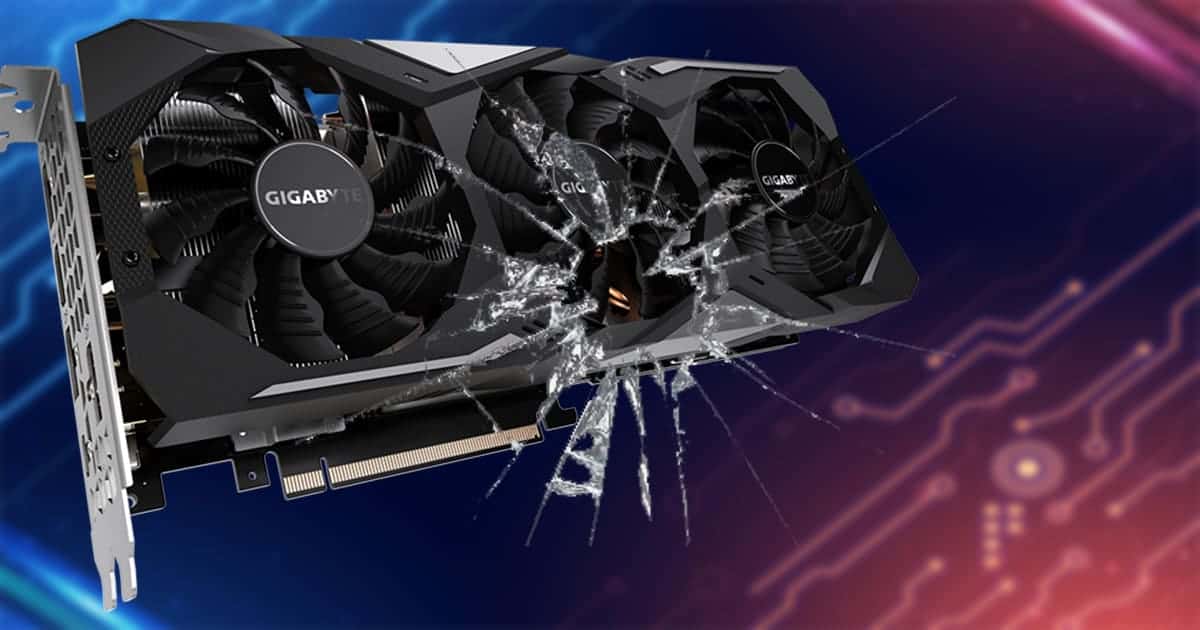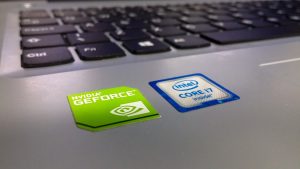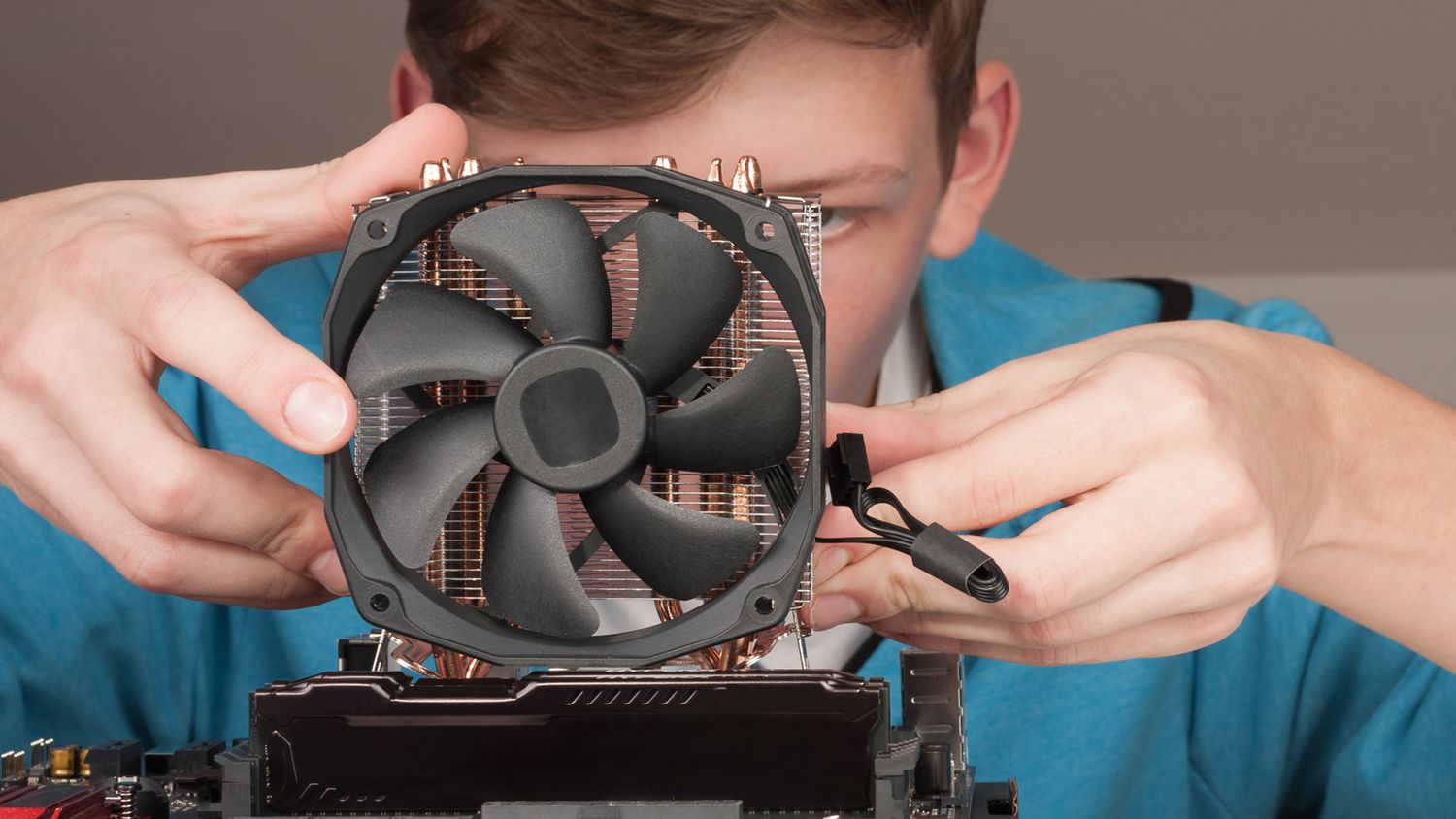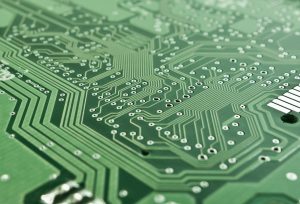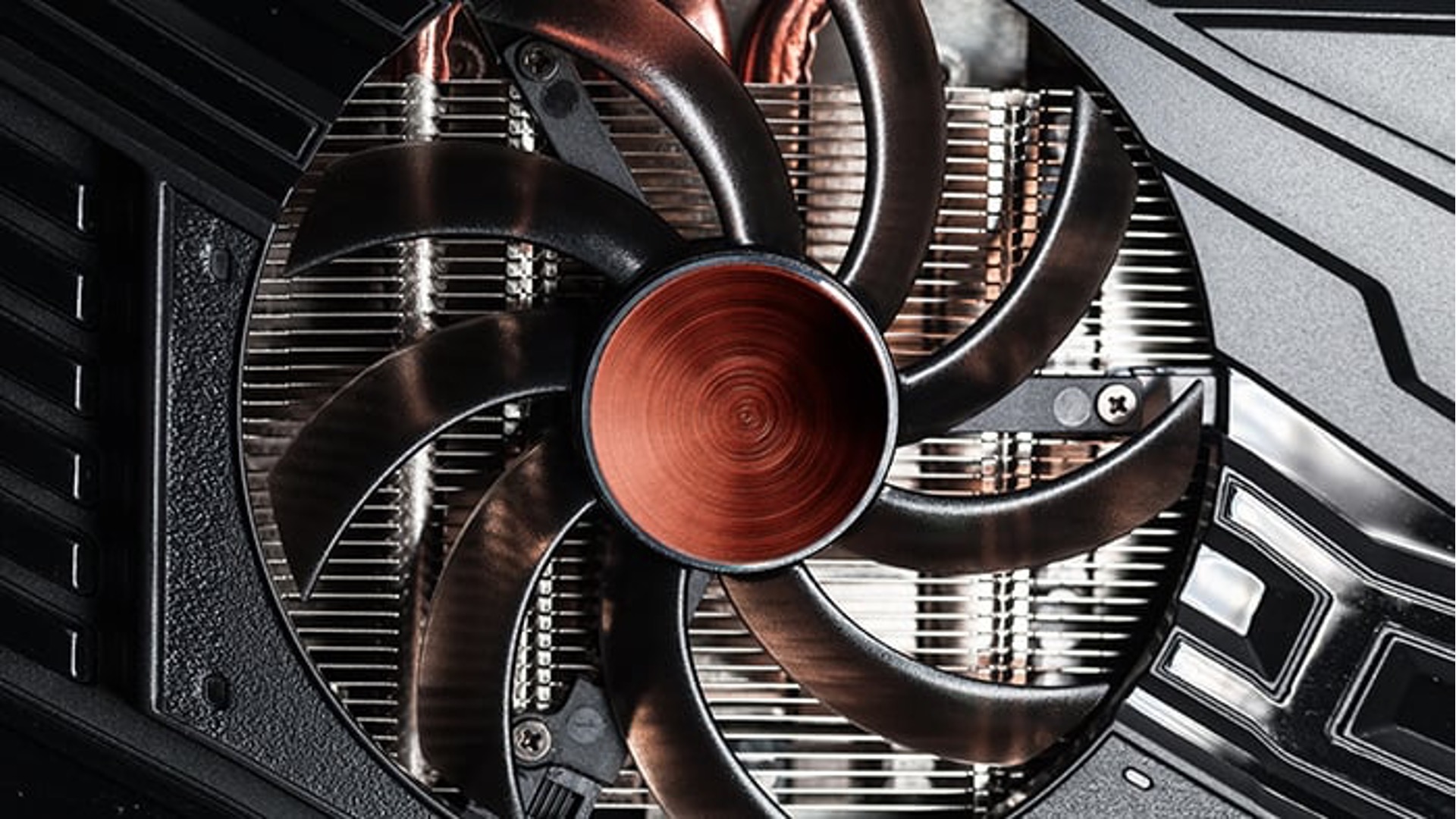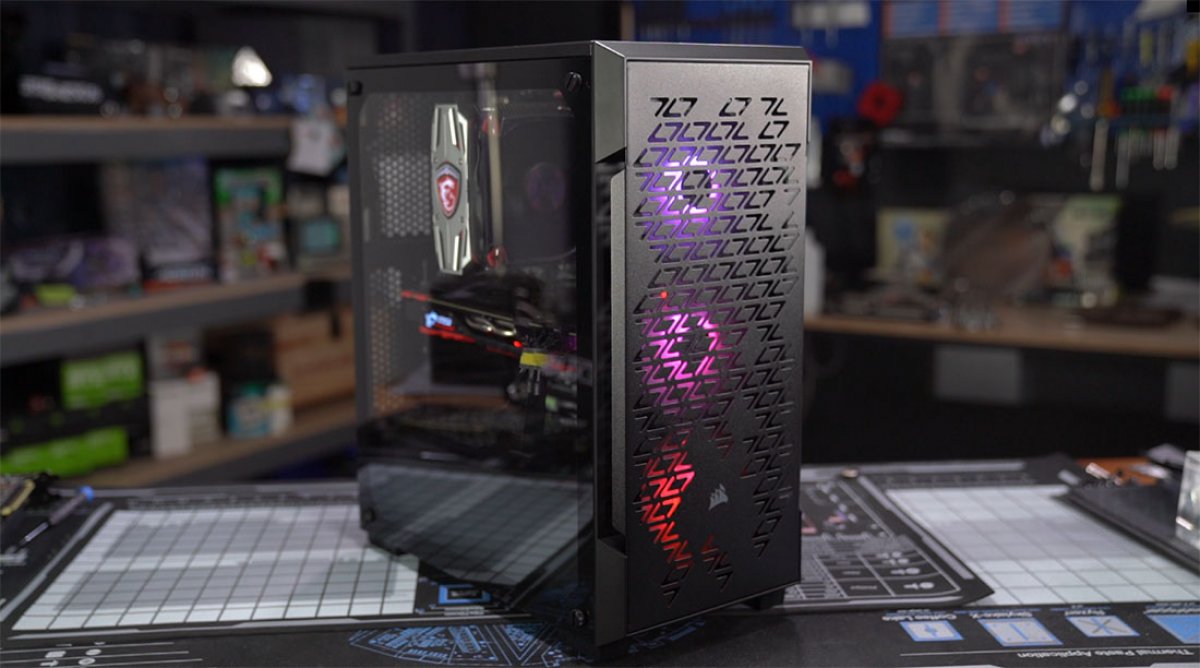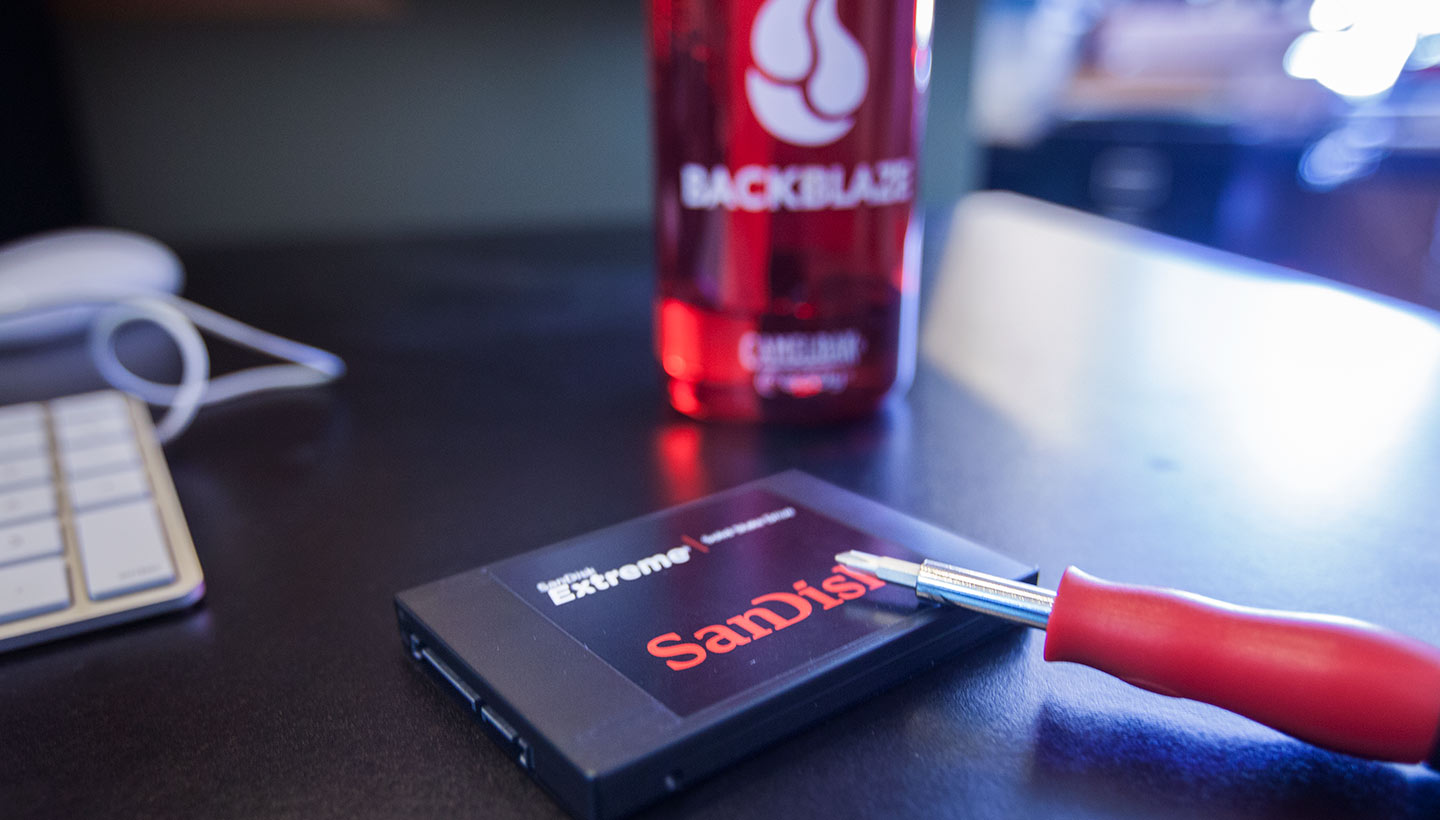Signs of a Bad GPU
If you’re experiencing issues with your computer’s graphics performance, it could be a sign of a failing or faulty Graphics Processing Unit (GPU). The GPU is responsible for rendering images, videos, and animations on your screen. When it starts to malfunction, it can lead to various visual problems and performance issues. In this section, we will explore the signs that indicate a bad GPU, helping you identify the problem and take appropriate action.
1. Constant Crashing or Freezing: One of the most noticeable signs of a bad GPU is frequent crashes or freezing of your computer. If your screen suddenly turns black or your computer becomes unresponsive while performing graphics-intensive tasks, it’s likely due to a GPU problem. This could be caused by overheating, driver issues, or hardware failure.
2. Artifacting on the Screen: If you see strange visual artifacts or abnormalities on your screen, such as random colored pixels or distorted images, it’s a clear indication of a bad GPU. These artifacts can appear during gaming, video playback, or even while browsing the internet. They often occur when the GPU fails to render the graphics correctly.
3. Random Black Screens: Another sign of a failing GPU is encountering random black screens while using your computer. The screen may suddenly go black for a few seconds or even longer before coming back to normal. This can disrupt your work or gaming experience and is usually caused by GPU-related issues.
4. Overheating and Performance Issues: A malfunctioning GPU can lead to overheating, which in turn affects its performance. If you notice that your computer is running hotter than usual and experiencing performance slowdowns, it could be due to a bad GPU. Overheating can cause system instability, crashes, and even permanent damage to the GPU.
5. Visual Glitches and Distortions: When your GPU is failing, you might encounter visual glitches or distortions on the screen. These can include screen flickering, horizontal or vertical lines appearing on the display, or objects rendering incorrectly in games or applications. These issues indicate a problem with the GPU’s ability to process and display graphics accurately.
6. Graphical Errors in Games or Applications: If you’re experiencing graphical errors, like missing textures, pixelation, or distorted geometry, while playing games or using graphic-intensive applications, it’s a strong indication of a bad GPU. These errors occur when the GPU is unable to correctly render the visuals, producing incorrect or incomplete images.
7. Unable to Play Demanding Games: If your GPU is outdated, underpowered, or malfunctioning, you may find it difficult or impossible to play modern, graphically demanding games. You may experience significant lag, low frame rates, or the game may not even launch. This is a telltale sign that your GPU is not up to the task and needs attention.
8. Driver Issues and Incompatibilities: A bad GPU can cause driver conflicts or incompatibilities with your operating system. This can result in error messages, driver crashes, or the inability to install or update GPU drivers. If you’re constantly encountering driver-related issues, it’s worth considering whether your GPU is the underlying problem.
9. Blue Screen of Death (BSOD): GPU-related problems can also trigger the dreaded Blue Screen of Death. If your computer frequently crashes and displays a blue screen with an error message, it’s likely due to GPU issues. The specific error code can provide more insights into the nature of the problem.
10. Failure to Display on External Monitor: When a GPU is malfunctioning, it may fail to output a signal to external displays or projectors. If you connect your computer to an external monitor and there’s no display or the screen remains black, it could be indicative of GPU-related problems.
11. Loud Fan Noise or Unusual Sounds: GPUs have fans to dissipate heat and keep the temperature within safe limits. If your GPU starts producing unusually loud fan noise or other strange sounds, it could be a sign of thermal issues or hardware failure. This can be attributed to a malfunctioning GPU cooler or other components.
12. System Reboots or Shutdowns: In some cases, a failing GPU can cause sudden system reboots or shutdowns, especially during graphics-intensive tasks. Your computer may unexpectedly restart or power off due to the GPU struggling to cope with the demands of the software or experiencing hardware issues.
These signs can help you identify if your GPU is experiencing problems. Remember that graphics issues can also be caused by other factors such as outdated drivers or software conflicts, so it’s essential to troubleshoot and pinpoint the exact cause. If you suspect a faulty GPU, it’s advisable to seek professional assistance or consider replacing the GPU to restore your computer’s graphics performance.
Constant Crashing or Freezing
One of the most noticeable signs of a bad GPU is the constant crashing or freezing of your computer. If you’re using your computer for gaming, graphic design, or any other graphics-intensive tasks, and you experience frequent crashes or your screen freezes unexpectedly, it could be an indication of a failing or faulty GPU.
When a GPU is working properly, it efficiently processes and renders graphics data, allowing you to enjoy smooth and seamless visuals on your screen. However, if there’s an issue with the GPU, such as overheating, driver conflicts, or hardware failure, it can lead to crashes or freezing. This can be frustrating and disrupt your work or gaming experience.
Crashing or freezing can happen in various scenarios. For example, while playing a game, your screen might suddenly go black, or the game may crash back to your desktop. Similarly, while running graphic-intensive applications or editing videos, your computer may become unresponsive and require a forced restart.
There are several reasons why a bad GPU can cause constant crashing or freezing. Overheating is a common culprit, especially if the GPU’s cooling system is not functioning correctly or if you’re pushing the GPU to its limits for extended periods. When the GPU overheats, it can’t operate efficiently, leading to system instability and crashes.
Another possible cause of crashing or freezing is driver issues. If the GPU driver installed on your computer is outdated, incompatible, or corrupted, it can cause conflicts with the operating system or other software components. As a result, you may experience crashes or screen freezes.
Hardware failure is another potential reason for constant crashing or freezing. Over time, the GPU’s components may degrade, leading to malfunctions. This can manifest as frequent crashes, screen flickering, or distorted visuals. In some cases, physical damage or improper installation can also result in GPU-related crashes or freezing.
When you experience constant crashing or freezing, it’s crucial to diagnose the problem accurately. Start by checking the GPU’s temperature using monitoring software. If the temperature is excessively high, clean the GPU’s fans and heatsinks to ensure proper cooling. You may also need to reapply thermal paste to improve heat dissipation.
Updating the GPU drivers to the latest version can also help resolve crashing or freezing issues. Visit the GPU manufacturer’s website or use specialized software to download and install the most recent drivers compatible with your GPU model and operating system. Additionally, consider updating your operating system and other software components to ensure compatibility and stability.
If the crashing or freezing issue persists despite these troubleshooting steps, it may indicate a more severe GPU problem. At this point, seeking professional assistance or replacing the GPU might be necessary to restore the stability and performance of your computer.
Artifacting on the Screen
If you start noticing strange visual artifacts or abnormalities on your computer screen, such as random colored pixels, lines, or distorted images, it could be a clear indication of a bad GPU. This phenomenon, known as artifacting, occurs when the GPU fails to render graphics correctly, resulting in visual glitches and anomalies.
Artifacting can manifest in different ways, depending on the severity of the GPU issue. You may notice small, isolated dots or pixels of incorrect colors scattered across the screen. In more severe cases, entire sections of the screen may become pixelated, displaying distorted images or unusual patterns. These artifacts can appear during various tasks, such as gaming, watching videos, or even during regular web browsing.
The root cause of artifacting is often related to the GPU’s hardware failure or instability. Over time, the components of the GPU can deteriorate, leading to electrical abnormalities and errors in rendering graphics. Excessive heat can also contribute to artifacting, as it affects the GPU’s ability to function optimally.
Additionally, improper overclocking of the GPU can cause artifacting. Overclocking refers to manually increasing the clock speed and voltage of the GPU to achieve better performance. While this can provide a performance boost, unstable overclocking settings can result in artifacts and other graphical issues. Resetting the GPU to its default settings may help alleviate this problem.
If you suspect artifacting on your screen, there are a few steps you can take to address the issue. First, ensure that your GPU is not overheating. Poor cooling or dust accumulation can hinder the GPU’s ability to dissipate heat effectively. Clean the cooling components, such as fans and heatsinks, and consider improving airflow within your computer case.
Updating your GPU drivers to the latest version is also recommended. GPU manufacturers regularly release driver updates to address bugs, improve compatibility, and enhance performance. Visit the manufacturer’s website or use automatic driver update software to acquire and install the latest drivers compatible with your GPU model and operating system.
In some cases, artifacting may only occur when running specific applications or games. This could indicate compatibility issues between the GPU and the program in question. Updating the software to its latest version or contacting the software developer for support may help resolve the artifacting problem.
However, if artifacting persists despite performing these troubleshooting steps, it’s likely that the GPU is defective and needs to be replaced. Consider consulting with a professional technician or contacting the GPU manufacturer’s support for further assistance. They can help diagnose the issue accurately and guide you through the steps required to replace the faulty GPU.
Random Black Screens
Experiencing random black screens while using your computer can be a frustrating and concerning issue. If your screen suddenly goes black, with no warning or error messages, it could be a sign of a failing or faulty GPU. These random black screens can occur during any task, whether you’re gaming, working, or simply browsing the web.
The occurrence of random black screens is typically indicative of a problem in the communication between your GPU and the monitor. When the GPU fails to send a signal properly, the monitor loses the video feed and displays a black screen. This can happen for various reasons related to both hardware and software.
One common cause of random black screens is an outdated or incompatible GPU driver. If the driver is not functioning correctly, it can lead to communication errors between the GPU and the monitor, resulting in black screens. Updating the GPU driver to the latest version can often resolve this issue, as newer drivers often include bug fixes and compatibility improvements.
Another possible reason for random black screens is a loose or faulty connection between the GPU and the monitor. Check all the cables and connections to ensure they are secure. Disconnect and reconnect the cables, ensuring a snug fit. If you’re using an external monitor, try switching to a different cable or port to rule out a cable or port malfunction.
Overheating can also contribute to random black screens. When the GPU reaches abnormally high temperatures, it may go into a protective mode that shuts down or reduces its output. This can result in intermittent black screens. Ensure that your GPU’s cooling system is functioning properly, clean any dust or debris that may be obstructing airflow, and consider improving case ventilation.
Power-related issues can also cause random black screens. Insufficient power supply to the GPU or fluctuations in power can disrupt the communication between the GPU and the monitor, leading to black screens. Ensure that your power supply unit is capable of delivering enough power to the GPU and consider using a different power outlet or surge protector to rule out power-related problems.
If you’ve checked all these potential causes and the random black screens still persist, it’s possible that the GPU itself is faulty. In such cases, professional diagnosis and assistance may be necessary. A technician can perform tests and evaluations to determine if the GPU needs to be repaired or replaced.
It’s worth noting that in some instances, random black screens can also be caused by other hardware or software issues. Faulty RAM, conflicts between software applications, or even malware can potentially disrupt the communication between the GPU and the monitor. Therefore, it’s essential to perform thorough troubleshooting to pinpoint the exact cause of the problem.
If you’re unsure or uncomfortable with performing the troubleshooting steps yourself, consider reaching out to a professional technician who can help diagnose and resolve the issue effectively.
Overheating and Performance Issues
Overheating and performance issues are common indicators of a bad GPU. The GPU, like any other component in your computer, generates heat during operation. It relies on an effective cooling system to maintain optimal temperatures and performance. However, if your GPU is overheating, it can lead to a range of problems that affect its performance and overall system stability.
When a GPU overheats, it may struggle to maintain consistent performance levels. As the temperature rises, the GPU may reduce its clock speed or even throttle its performance to prevent further overheating. This can result in noticeable performance issues during gaming, graphic-intensive tasks, or even while running basic applications.
One of the primary causes of GPU overheating is inadequate cooling. If the GPU’s cooler, including the fans and heatsinks, is clogged with dust or obstructed by other components, it cannot effectively dissipate heat. This can lead to a buildup of heat within the GPU, causing it to overheat. Regularly cleaning the GPU cooler and ensuring proper airflow within your computer case can help prevent overheating.
In some cases, the GPU’s cooling system may be insufficient for the demands you’re placing on it. Certain GPUs may come with less capable coolers or may struggle to handle extremely graphic-intensive applications. In such cases, upgrading to a more robust cooling solution, such as an aftermarket cooler, or even considering liquid cooling, can help lower the GPU’s temperatures and improve performance.
Another factor that can contribute to GPU overheating is overclocking. Overclocking involves manually increasing the GPU’s clock speed and voltage to achieve better performance. However, if done improperly or without proper cooling, it can cause the GPU to overheat. If you’ve overclocked your GPU and are experiencing overheating issues, resetting it to its default settings can help alleviate the problem.
Performance problems associated with GPU overheating can manifest in different ways. You may experience frame rate drops, stuttering, or lag during gameplay. Graphics-intensive applications may take longer to load, or you may notice delays and sluggishness when working with visual content. These issues are generally temporary and can be resolved by addressing the GPU’s overheating problem.
It’s important to monitor your GPU’s temperatures to ensure they stay within safe operating limits. Numerous software tools, such as GPU-Z or MSI Afterburner, allow you to monitor the GPU’s temperature in real-time. If you consistently notice high temperatures, take steps to improve cooling, such as cleaning the cooler or adjusting its fan curves.
In extreme cases, where the GPU overheating issue persists despite these measures, it may indicate a more severe underlying problem. The GPU’s thermal paste, which helps transfer heat from the GPU to the cooler, may need to be replaced. Alternatively, the GPU itself may be malfunctioning and require professional attention or, in some cases, a replacement.
By addressing GPU overheating issues promptly, you can protect your GPU from damage and maintain its performance and longevity. Regular maintenance, adequate cooling, and safe operating temperatures will help ensure optimal performance and prevent performance issues related to overheating.
Visual Glitches and Distortions
Visual glitches and distortions on your computer screen can be indicative of a bad GPU. These glitches manifest as abnormalities in the visuals displayed, including flickering screens, horizontal or vertical lines, or distorted images. When your GPU is failing, it may struggle to render graphics correctly, resulting in these visual anomalies.
Visual glitches can occur during various activities, such as gaming, video playback, or even while browsing the internet. They can vary in intensity, from minor flickering or occasional line artifacts to severe distortions that make the screen almost unreadable. These glitches can be temporary or persistent, depending on the underlying issue with the GPU.
One of the common causes of visual glitches is an issue with the GPU’s hardware. Over time, the GPU’s components may become worn or degraded, leading to errors in rendering graphics. These errors can manifest as glitches and distortions on the screen. Physical damage to the GPU, such as from drops or impacts, can also cause visual abnormalities.
Overheating is another factor that can contribute to visual glitches. When the GPU overheats, it may not function properly, leading to errors in rendering graphics. This can result in screen flickering, lines appearing on the display, or other visual distortions. Proper cooling of the GPU is crucial to prevent overheating and minimize the chances of visual glitches.
Outdated or incompatible GPU drivers can also cause visual glitches. If the installed driver doesn’t communicate properly with the GPU, it can lead to errors in rendering graphics. Updating the GPU drivers to their latest versions can often resolve these issues, as manufacturers regularly release driver updates to address bugs and improve performance and compatibility.
In some cases, visual glitches may be related to software conflicts or compatibility issues. If you recently installed new software or made changes to your system, it’s worth considering whether these changes could be causing the visual abnormalities. Uninstalling or disabling any recently installed software or driver updates can help determine if they are responsible for the glitches.
Faulty cables or connectors can also contribute to visual glitches. Loose connections or damaged cables can disrupt the transmission of the video signal from the GPU to the monitor, resulting in visual abnormalities. Checking and securing all connections are essential to rule out this potential cause of the glitches.
When troubleshooting visual glitches, it’s important to rule out other factors that could be causing the issue. Monitor problems, such as damaged panels or incorrect settings, can also lead to visual abnormalities. Testing the GPU with a different monitor or connecting your current monitor to a different computer can help determine if the GPU is indeed the source of the problem.
If visual glitches persist despite performing basic troubleshooting steps, it’s advisable to seek professional assistance. A trained technician can assess the GPU and diagnose any specific hardware issues that may require repair or replacement. It’s essential to address visual glitches promptly to prevent further damage to the GPU and ensure optimal graphics performance.
Graphical Errors in Games or Applications
Experiencing graphical errors in games or applications can be a clear indication of a bad GPU. When your GPU is failing, it may struggle to render graphics correctly, leading to various graphical abnormalities. These errors can manifest as missing textures, pixelation, distorted geometry, or other visual glitches that significantly affect your gaming or multimedia experience.
One of the common graphical errors is missing textures, where objects or surfaces in a game or application appear flat or devoid of detail. Instead of displaying the intended textures, these areas may be filled with solid colors or exhibit strange patterns. This can occur when the GPU fails to load or render the textures properly.
Pixelation is another graphical error that can make images or textures appear blocky or distorted. This phenomenon occurs when the GPU incorrectly calculates the color values and positions of pixels, resulting in jagged edges and a lack of smoothness in the visuals. Pixelation can severely impact the visual quality and immersion in games and applications.
Distorted geometry is another common graphical error, where objects or characters appear stretched, deformed, or have incorrect proportions. This can make the game or application look visually inconsistent and unrealistic. Distorted geometry can occur due to hardware failures or issues with the GPU’s rendering capabilities.
Other graphical errors may include flickering textures, lighting issues, or even complete screen freezes during gameplay. These errors can disrupt gameplay, make it difficult to navigate the virtual world, and negatively affect the overall gaming experience. Similarly, graphical errors in other applications, such as graphic design or video editing software, can hinder productivity and lead to inaccurate output.
Graphical errors in games or applications can stem from various causes. Outdated or incompatible GPU drivers are a common culprit. If the driver is not optimized for a specific game or application, it may result in graphical glitches. Updating the GPU drivers to their latest versions helps ensure compatibility and often resolves these issues.
Overheating can also contribute to graphical errors. When the GPU reaches high temperatures, it may struggle to function properly and render graphics accurately. Proper cooling, including cleaning the GPU’s cooling components and improving case ventilation, can help prevent overheating and minimize graphical errors.
Insufficient system resources, such as inadequate RAM or an underpowered power supply, can lead to graphical errors as well. When a game or application requires more resources than your system can provide, the GPU may not be able to render the graphics correctly. Upgrading your hardware to meet the recommended requirements can help resolve these graphical issues.
Lastly, hardware-related problems, such as a failing GPU or faulty VRAM, can cause widespread graphical errors. These issues may require professional assistance or, in severe cases, GPU replacement to fix the underlying problems.
If you encounter graphical errors in games or applications, it’s advisable to start troubleshooting by updating your GPU drivers and checking for any available patches or updates for the specific game or application. If the issues persist, consider monitoring your GPU’s temperature, upgrading your system resources if necessary, and seeking professional assistance if needed. Addressing graphical errors promptly can help restore optimal graphics performance and enhance your overall gaming or multimedia experience.
Unable to Play Demanding Games
If you find yourself unable to play demanding games on your computer, it could be a clear indication of a bad GPU. Demanding games require a powerful graphics processing unit (GPU) to render complex graphics and deliver smooth gameplay. When your GPU is outdated, underpowered, or malfunctioning, it may struggle to meet the requirements of these games, resulting in poor performance or an inability to run them altogether.
One of the primary factors that prevent you from playing demanding games is insufficient GPU horsepower. Newer games often have high system requirements, including minimum GPU specifications. If your GPU falls below these minimum requirements, you may experience significant lag, low frame rates, or the game may not even launch.
Outdated GPU drivers can also hinder your ability to play demanding games. Developers continually release driver updates that optimize the GPU’s performance, enhance compatibility, and address any known issues. By not updating your GPU drivers, you may encounter compatibility problems or miss out on performance improvements specifically tailored for demanding games.
Overheating can also contribute to the inability to play demanding games. When the GPU reaches high temperatures, it may experience thermal throttling, a mechanism that reduces its performance to prevent overheating. This can result in laggy gameplay, frame rate drops, and a generally poor gaming experience. Adequate cooling and proper airflow within your computer case are crucial to prevent overheating.
Insufficient system resources can also be a barrier to playing demanding games. Alongside the GPU, games rely on other components such as the CPU and RAM to deliver a smooth gaming experience. If your system lacks the necessary resources, the GPU may not be able to perform optimally, leading to poor game performance or an inability to run the game at all. Upgrading your hardware, such as adding more RAM or upgrading to a more powerful CPU, can help address this issue.
It’s worth noting that compatibility issues can also arise when playing demanding games. Certain games may be developed specifically for certain GPU architectures or may require specific features that your GPU does not support. In such cases, it may be necessary to upgrade your GPU to meet the game’s compatibility requirements.
Before concluding that your GPU is the culprit for being unable to play demanding games, it’s important to rule out other variables. Ensure that your game is up to date with the latest patches and updates, as these can often improve performance and resolve compatibility issues. Also, confirm that your system meets the game’s minimum requirements, including CPU, RAM, and storage specifications.
If you’ve checked these factors and determined that your GPU is indeed the bottleneck, it may be time to consider upgrading to a more powerful GPU. Consult with a professional or do thorough research to find a GPU that suits your budget and gaming needs. Upgrading your GPU can significantly improve your ability to play demanding games and enjoy a smoother and more immersive gaming experience.
Driver Issues and Incompatibilities
Driver issues and incompatibilities can cause a range of problems with your GPU, impacting its performance and compatibility with software and operating systems. The GPU driver serves as a crucial link between your GPU and the operating system, enabling proper communication and ensuring optimal performance. When driver issues arise or incompatibilities occur, it can result in various issues that affect the functionality of your GPU.
One of the common symptoms of driver issues is frequent crashes or system instability. Outdated or corrupted drivers can cause conflicts with the operating system or other software components, leading to system crashes, blue screens, or freezes. If you notice sudden crashes or instability, updating your GPU drivers is a good starting point.
Compatibility issues between the GPU driver and the operating system or specific software can also arise. New operating system updates or software releases may require updated GPU drivers to ensure compatibility. If your GPU driver is outdated, it may not work optimally with the latest operating system features or new software, resulting in performance problems or incompatibilities.
Another issue related to drivers is the presence of “beta” or pre-release drivers. While these drivers may offer certain improvements or features, they are often less stable and can introduce unexpected issues. If you’re experiencing problems with your GPU, it’s advisable to switch to the stable release of the driver and avoid using beta versions unless necessary.
In some cases, driver update installations may fail or result in errors. This can happen due to various factors, such as incomplete downloads, internet connectivity issues, or conflicts with existing software. If your driver update installation fails, try downloading the driver directly from the GPU manufacturer’s website and follow the installation instructions carefully.
When encountering driver issues or incompatibilities, a common troubleshooting step is to perform a clean reinstall of the GPU drivers. This involves completely removing all traces of the existing drivers and then installing the latest version from scratch. Driver uninstallation tools provided by the GPU manufacturer or third-party software can facilitate this process.
Updating your GPU drivers regularly is essential to ensure optimal performance and compatibility with the latest software. GPU manufacturers often release driver updates that address bugs, improve performance, and provide support for new games or applications. Regularly checking for driver updates and installing them can help resolve many driver-related issues.
It’s worth noting that in some cases, the GPU driver issues may be a symptom of a more severe problem, such as a failing or faulty GPU. If updating or reinstalling the drivers does not resolve the issues, it may be necessary to consult a professional technician to diagnose the problem accurately.
Finally, before updating GPU drivers, remember to create a system restore point or backup your important data. This precautionary measure can help mitigate any potential issues that may arise during the driver update process.
By staying proactive, keeping your GPU drivers up to date, and addressing driver issues promptly, you can maintain stable and optimal performance for your GPU, ensuring compatibility with the latest software and operating systems.
Blue Screen of Death (BSOD)
Encountering the Blue Screen of Death (BSOD) is a significant sign of a serious problem with your computer, and it can often be related to issues with your GPU. The BSOD appears as a blue screen with an error message displayed on it, indicating that a critical error has occurred in your system. This error can result from a variety of factors, but when GPU-related issues are the cause, it’s essential to address them promptly.
The BSOD can occur during various scenarios, including gaming, graphic-intensive tasks, or regular computer usage. If your screen suddenly turns blue and displays an error message, it’s crucial to note the error code, as it can provide insights into the nature of the problem. Common GPU-related error codes include “VIDEO_TDR_FAILURE” or “THREAD_STUCK_IN_DEVICE_DRIVER.”
GPU-related BSOD errors can be caused by outdated or incompatible GPU drivers. If the driver is not functioning correctly or does not communicate properly with the GPU, it can result in system crashes. Therefore, it’s important to make sure that your GPU drivers are up to date and compatible with your operating system.
Overheating can also be a contributing factor to GPU-related BSOD errors. When the GPU becomes too hot and exceeds its operating temperature limits, it can cause the system to crash to prevent further damage. Inadequate cooling, such as clogged fans or improper airflow, can exacerbate overheating issues and increase the likelihood of BSOD errors.
Faulty or incompatible hardware can also trigger GPU-related BSOD errors. Issues with the GPU itself, such as a failing or defective GPU, can lead to system instability and crashes. Additionally, incompatible or faulty RAM, power supply unit, or other components can cause GPU-related BSOD errors.
To troubleshoot GPU-related BSOD errors, start by updating your GPU drivers to the latest version. Visit the GPU manufacturer’s website or use automatic driver update software to acquire and install the most recent drivers compatible with your GPU model and operating system. Also, check for any available updates for your operating system and other software components.
Additionally, ensure that your GPU is not overheating. Properly clean the GPU’s cooling components, such as fans and heatsinks, and improve case ventilation to prevent overheating. Using monitoring software can help you keep track of your GPU’s temperature and take appropriate action if necessary.
If GPU driver and overheating issues are ruled out, and you’re still encountering GPU-related BSOD errors, it may be indicative of a more severe hardware problem. In such cases, consulting with a professional technician or contacting the GPU manufacturer’s support can provide you with the necessary guidance to diagnose the root cause accurately.
Remember to back up your important data regularly to prevent data loss during troubleshooting. BSOD errors can be unpredictable, and it’s always a good practice to have backups in place to safeguard your important files and documents.
Addressing GPU-related BSOD errors promptly is crucial to prevent further system crashes and potential damage to your hardware. By ensuring updated GPU drivers, proper cooling, and seeking professional assistance when necessary, you can mitigate GPU-related BSOD errors and maintain a stable and reliable computer system.
Failure to Display on External Monitor
Failure to display on an external monitor is a common issue that can be attributed to problems with the GPU. If you connect your computer to an external monitor and encounter a blank screen or no signal, it’s likely that the GPU is responsible for the failure to display.
There are several potential reasons why your GPU may fail to display on an external monitor. One possibility is a loose or faulty connection between the GPU and the monitor. Ensure that the cables connecting the GPU and the external monitor are securely plugged in and that there are no physical damages to the cables or connectors. Reconnecting or replacing the cables may help establish a proper connection and restore the display.
Another common cause of failure to display on an external monitor is outdated or incompatible GPU drivers. If the drivers are not up to date, they may not properly communicate with the external monitor, resulting in a lack of display. Update your GPU drivers to the latest version from the manufacturer’s website to ensure compatibility and resolve any driver-related issues.
Resolution and refresh rate settings can also affect the output to an external monitor. Ensure that the resolution and refresh rate settings of your computer are compatible with the external monitor. Misconfigured settings can result in a blank screen or distorted display. Adjust the settings to match the supported resolutions and refresh rates of the monitor.
It’s also possible that the external monitor itself is experiencing issues. Test the monitor with another device to confirm whether the problem lies with the monitor or the GPU. If the external monitor works with another device, it suggests that the issue is with the GPU. If it doesn’t work with any device, the monitor may require troubleshooting or repair.
Some graphics cards have specific settings or control panels that allow you to configure the display output to external monitors. Access the GPU’s control panel or settings and ensure that the correct output source (such as the external monitor’s port) is selected. Additionally, check for any specific settings related to external monitor display and adjust them accordingly.
If you’ve exhausted these troubleshooting steps and are still unable to display on the external monitor, it may indicate a problem with the GPU itself. Contacting the GPU manufacturer’s support or seeking professional assistance from a technician can help diagnose and resolve the issue.
In some cases, updating the GPU firmware may be necessary to address compatibility issues or bugs with external display connectivity. Consult the manufacturer’s documentation or support resources for instructions on how to update the GPU firmware.
Ensure that the external monitor is functioning correctly before troubleshooting the GPU. If the monitor has multiple input sources, such as HDMI and DisplayPort, try switching to a different input source to verify that the issue is not with the monitor or its cables.
By carefully checking connections, updating drivers, adjusting settings, and seeking professional assistance when needed, you can troubleshoot and resolve the failure to display on an external monitor, ensuring that your GPU functions properly with external displays.
Loud Fan Noise or Unusual Sounds
Experiencing loud fan noise or unusual sounds coming from your computer can be an indication of a problem with your GPU. GPUs use fans to dissipate heat and maintain optimal operating temperatures. If you notice an increase in fan noise or hear unusual sounds, it may point to an issue with the GPU’s cooling system or other related components.
Loud fan noise can occur when the GPU’s cooling system is working harder to dissipate heat. As the GPU heats up during intense usage, the fans spin at higher speeds to maintain lower temperatures. However, if the fan noise becomes excessively loud, it suggests a problem with the cooling system.
One possible cause of loud fan noise is dust accumulation or blockage in the GPU’s cooling components, such as the fans and heatsinks. Over time, dust can collect on these components, hindering airflow and causing the fans to work harder. Cleaning the fans and heatsinks with compressed air or a soft brush can improve cooling efficiency and reduce fan noise.
If the fan noise persists after cleaning, it may indicate a problem with the GPU’s fan itself. The fan may be malfunctioning, worn out, or unbalanced, causing excessive noise. In such cases, seeking professional assistance or contacting the GPU manufacturer’s support is advisable to determine if the fan needs to be repaired or replaced.
Unusual sounds coming from your computer, such as grinding, buzzing, or rattling noises, can also be indicative of a problem with the GPU or its components. Grinding or buzzing noises may indicate that the GPU’s fan is hitting something, potentially due to a loose or damaged fan blade. Rattling noises might be caused by loose or insufficiently tightened screws.
If you suspect a loose screw, it’s advisable to open your computer case and check the GPU’s mounting screws. Ensure that all screws are properly tightened to avoid any unwanted vibrations or rattling sounds. However, exercise caution when handling the internal components to prevent accidental damage.
In some cases, unusual sounds can stem from coil whine, a phenomenon that occurs when electrical currents passing through components create audible high-pitched noises. Coil whine is typically harmless and doesn’t affect the functionality or lifespan of the GPU. However, if the noise becomes too prominent or bothersome, considering a GPU replacement or seeking professional assistance may be a viable option.
If you’ve ruled out dust, loose screws, and coil whine as the causes of the loud fan noise or unusual sounds, it’s important to inspect other components of your computer. Faulty or aging power supply units, hard drives, or case fans can also generate loud noises that may be mistaken for GPU-related issues. Carefully observe and isolate the source of the noise before concluding that it is specifically GPU-related.
Addressing loud fan noise or unusual sounds promptly helps maintain a stable and quiet computing environment. Regularly cleaning the GPU’s cooling components, ensuring proper fan functionality, and seeking professional assistance when necessary can help resolve such issues and ensure optimal performance for your GPU.
System Reboots or Shutdowns
Experiencing sudden system reboots or shutdowns can be unsettling and disruptive, and it may indicate a problem with your GPU. The GPU plays a crucial role in rendering graphics and handling the processing power required for graphically intensive tasks. When the GPU is experiencing issues, it can lead to system instability, resulting in unexpected reboots or shutdowns.
There are several potential causes for system reboots or shutdowns that can be attributed to the GPU. Overheating is a common culprit, as GPUs generate heat during operation. If the GPU overheats, it may trigger safety mechanisms that shut down the system to prevent damage. Inadequate cooling, clogged fans, or dust accumulation on the GPU’s cooling components can contribute to overheating.
Faulty or outdated GPU drivers can also cause system reboots or shutdowns. If the GPU drivers are incompatible, corrupt, or lacking necessary updates, they may conflict with the operating system, resulting in instability and unexpected shutdowns. Ensure that you have the latest GPU drivers installed and consider performing a clean driver reinstall to resolve any issues.
Hardware-related problems can be another factor behind system reboots or shutdowns. A failing or defective GPU can cause system instability and trigger reboots or shutdowns. This can be caused by damaged components, aging hardware, or inadequate power supplied to the GPU. Ensuring that the GPU is receiving sufficient power and checking for physical damage are important troubleshooting steps.
In some cases, software conflicts or compatibility issues can lead to system reboots or shutdowns. Outdated or incompatible software, especially games or applications that heavily rely on the GPU, can stress the GPU beyond its capabilities, resulting in system instability. Keeping your software up to date and verifying the compatibility of third-party applications can help prevent these issues.
In the event of system reboots or shutdowns, it’s essential to perform basic troubleshooting steps. Start by ensuring that the GPU’s cooling system is functioning correctly and that it is clean from any dust or debris. Monitor the GPU’s temperature to avoid overheating and potentially triggering automatic system shutdowns. Consider improving airflow within your computer case if cooling seems inadequate.
Update your GPU drivers to the latest versions compatible with your operating system. GPU manufacturers release driver updates to enhance stability and address known issues. Uninstalling any recently installed applications or reverting to system restore points before the issue started can help identify any software conflicts causing the reboots or shutdowns.
If system reboots or shutdowns continue after performing these troubleshooting steps, it may indicate a more severe problem with the GPU itself. In such cases, seeking professional assistance or contacting the GPU manufacturer’s support is recommended to diagnose the issue accurately and determine whether repair or replacement of the GPU is necessary.
Remember that system reboots or shutdowns can also be caused by other hardware or software issues unrelated to the GPU. Therefore, it’s important to systematically narrow down the possible causes by ruling out other components and conducting thorough troubleshooting to identify the root cause.
By addressing overheating, keeping GPU drivers up to date, resolving software conflicts, and seeking professional assistance when needed, you can mitigate system reboots or shutdowns related to the GPU and maintain a stable and reliable computing experience.







